Hampton Beach, Rye, North Hampton beaches sustain more damage due to high tide flooding
HAMPTON BEACH — Combined with the damage already done to the Seacoast by devastating back-to-back storms in January, Sunday’s rain and high surf took a toll on the coastline from Rye to Seabrook, causing flooding and damage.
At Hampton Beach, plans were in place early to accommodate the storm-driven high tide expected at 11:55 a.m. Sunday, according to Police Chief Alex Reno. But flooding began almost two hours earlier, he said, and barricades were used to block access to the beach on roadways like Winnacunnet, High Street and others, Reno said.
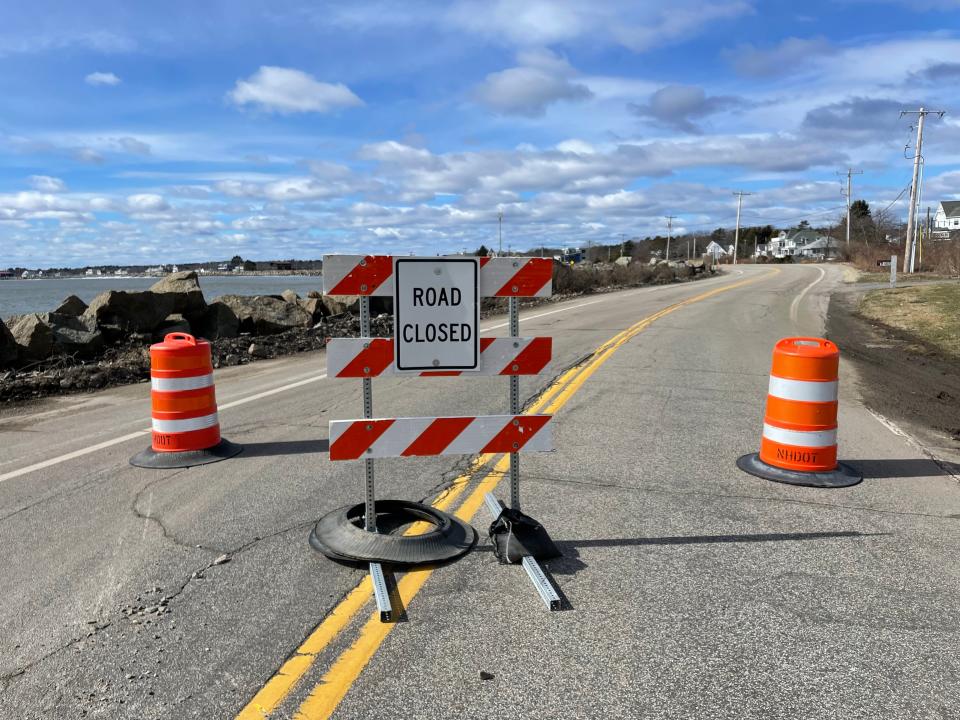
By high tide, several beach roads were flooded, such as Ashworth Avenue, Brown Avenue and Church Street, he said. Ocean Boulevard near the Hampton Beach Casino sustained less flooding, he said.
According to Reno, although the winds and rain didn’t bring the amount of water the beach experienced in January, one of the hardest hit sections was the Rocky Bend area. It had been damaged by January’s storms, and though some repairs were done, they hadn’t been completed, Reno said. Reno said the “angry ocean” undid the repairs and caused further damage to Route 1A’s infrastructure at that location.
The sand previously brought in to replenish storm-eroded areas was also washed out to sea by Sunday’s wave action.
More: FEMA tours storm damage at Hampton Beach, Rye. Will funds follow?
Seabrook
According to Seabrook Deputy Police Chief Kevin Gelineau, Seabrook Beach was heavily patrolled by extra police officers on Sunday.
“Some secondary roads washed over with water for a few hours that required they be blocked off,” Gelineau said, “specifically, River Street, Cross Beach Road, and one section of South Main Street. We had no calls for help from residents during high tide.”
Gelineau said although water was present on Route 286 protruding into the westbound lane, police kept the roadway open to accommodate traffic, which was heavier on Sunday than during the past two storms.
Gelineau said flooding incidents are becoming more frequent and severe in the Seabrook Beach district.
“We occasionally had flooding, but the levels are higher than typical,” Gelineau said. “I’m hoping this isn’t going to be the new ‘norm.’”
Storm aftermath: Coastal towns, businesses contemplate whether to rebuild or retreat
North Hampton
According to Fire Chief Jason Lajoie, Route 1A was closed due to flooding at North Hampton’s State Beach and Bass Beach, near the Rye line.
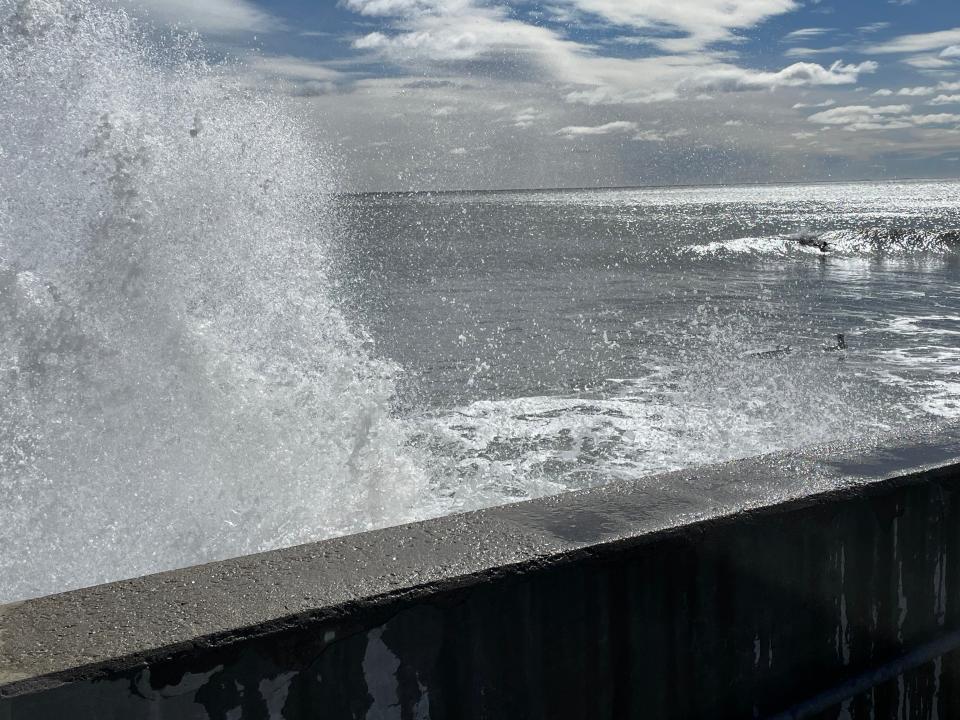
“The waves caused the berm at Bass Beach to break through, and rocks scattered across the road, making it impassable,” Lajoie said. “The state beach had high waves crashing over the sea wall again, which flooded the road and made it impassable.”
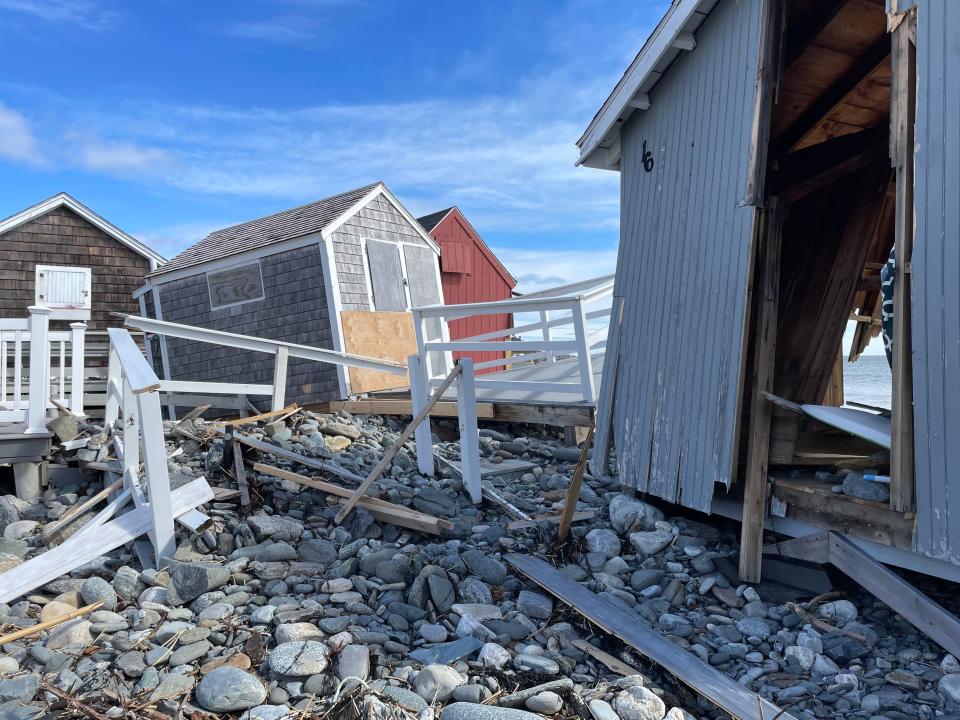
Lajoie said the previous damage done at the state beach parking lot and the bathhouses at the south end of the lot remain damaged from the prior storm.
Living on the edge: How coastal realtors are adapting following devastating floods
Rye
Rye Police Chief Kevin Walsh said the town’s seaside roads were closed from 10 a.m. to after 5 p.m. on Sunday due to the storm.
Repairs done in Rye along Route 1A after the Jan 13 storm helped protect the roadway, he said, even though they hadn’t been completed. But underlying issues on the road arose again to illustrate its vulnerabilities.
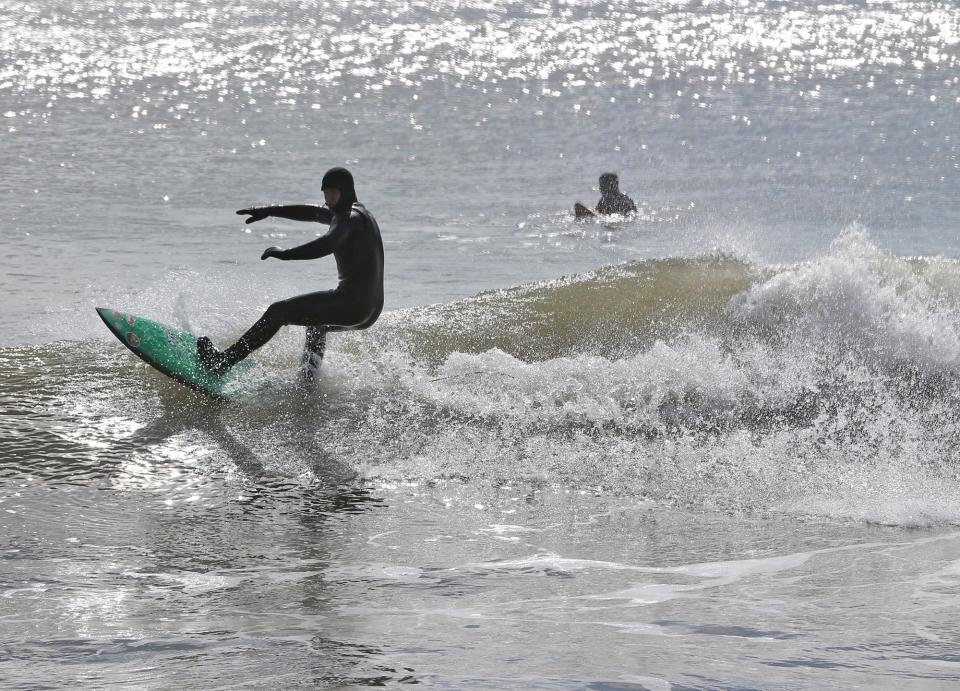
Most of the seawall berm rebuilt after collapsing Jan. 13 held fairly well, Walsh said, but the section by Bass Beach – always a problem – saw significant damage again when the berm collapsed.
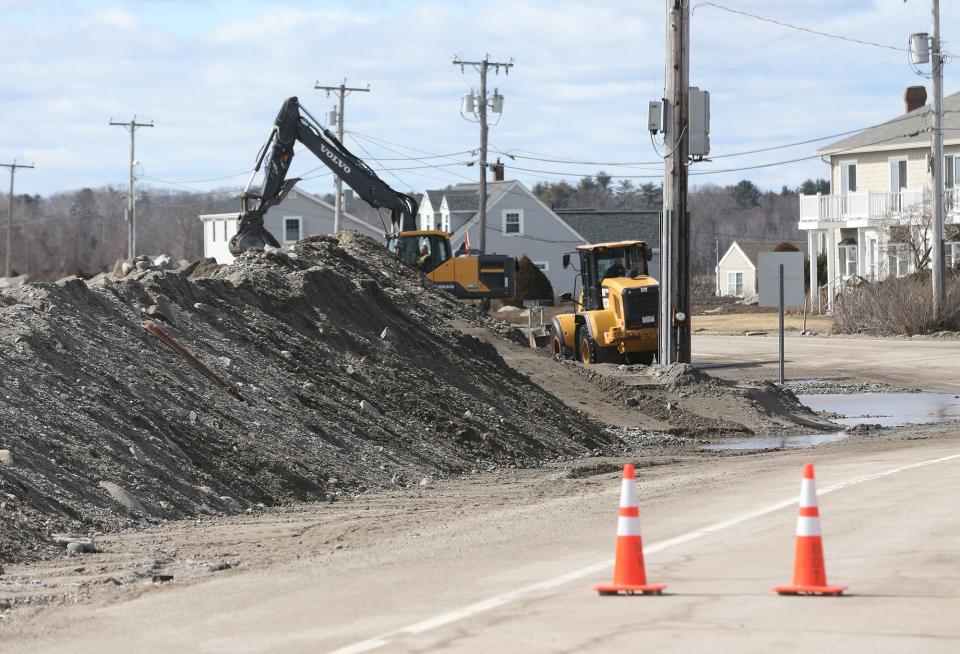
Walsh said after nearly three decades in Rye, he’s seen long-standing problems along Route 1A (Ocean Boulevard) during serious weather events. The state Department of Transportation knows the road’s weaknesses, he said, but with budget constraints, the needed upgrading and maintenance work often gets put off. The problems, he said, not only continue but worsen.
“It’s like continuing to put off painting your house,” Walsh said. “Eventually, the paint wears off.”

The storm did present some interesting surprises, Walsh said, even for a 27-year police veteran like himself. At one point during the storm, Walsh stationed himself at Foss Beach where a bulldozer operator was driving back and forth recovering shale to rebuild the berm and protect the area. Walsh was concerned for the bicyclists riding through the high water despite the road’s closing. He worried the bulldozer operator might not see them.
But as Walsh watched bicyclists on the road, he noticed a man emerge from the sea after taking a swim in the stormy ocean.
“He climbed up over the shale and walked over to his car,” Walsh said.
Walsh continues to be amazed by people who insist on being out in dangerous areas during coastal storms. Many are sightseeing, he said, without realizing the danger they present or the damage they do by driving and riding through high water.
“When people go through high water, they create waves,” Walsh said. “Those waves create problems for the nearby homes and end up filling their basements.”
Planning for future flooding offered
In response to the now frequent flooding taking place along New Hampshire’s coastline, from 6:30 to 8 p.m. on Wednesday, March 13, the Office of Coastal Management is offering “Flood and Emergency Preparedness” at the Hampton Beach Seashell Complex, located at 60 Ocean Blvd. (Route 1A)
Those who attend can learn from emergency responders how to protect their property and family from the impact of severe weather, track weather forecasts, assemble emergency supply kits and plans, how to make evacuation or sheltering decisions, as well as post-flood recovery measures.
The program is offered in conjunction with the New Hampshire Department of Environmental Services.
This article originally appeared on Portsmouth Herald: Hampton Beach, Seacoast beaches sustain more damage due to flooding
